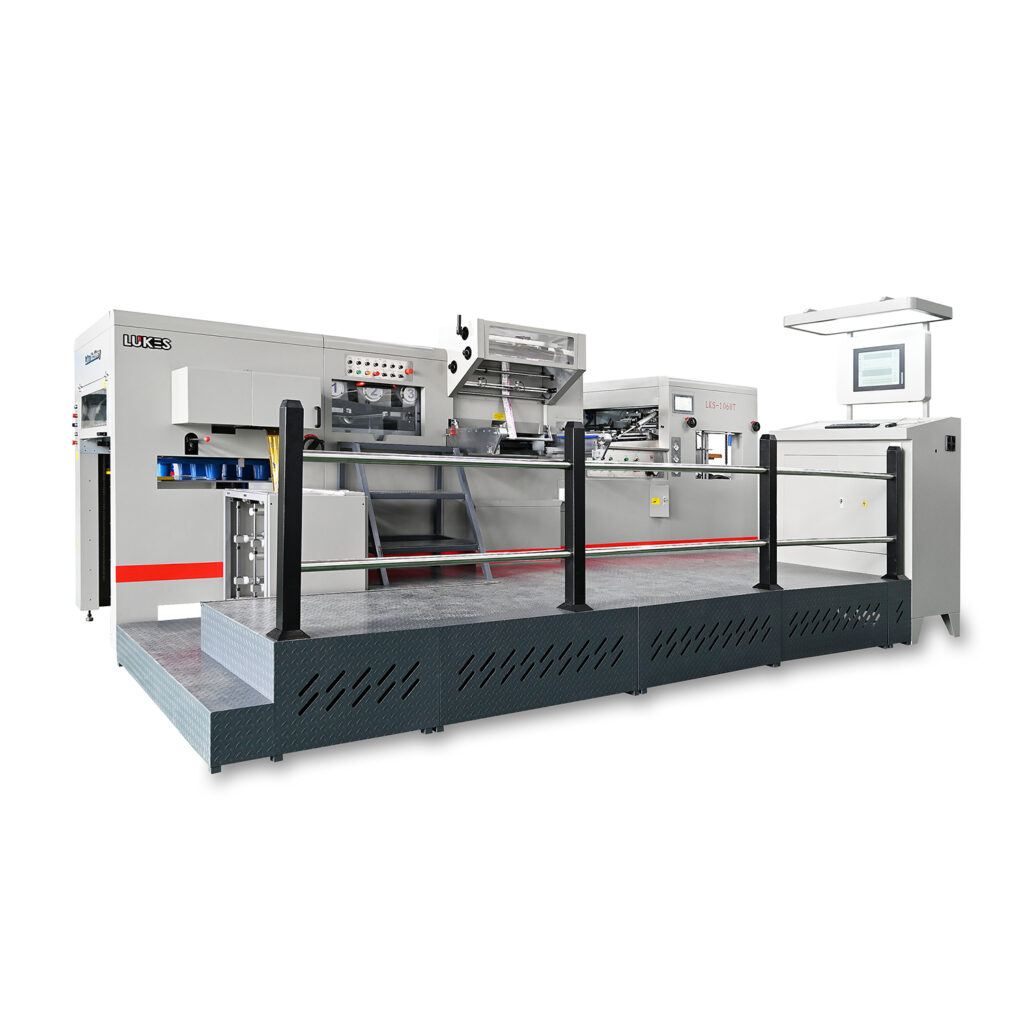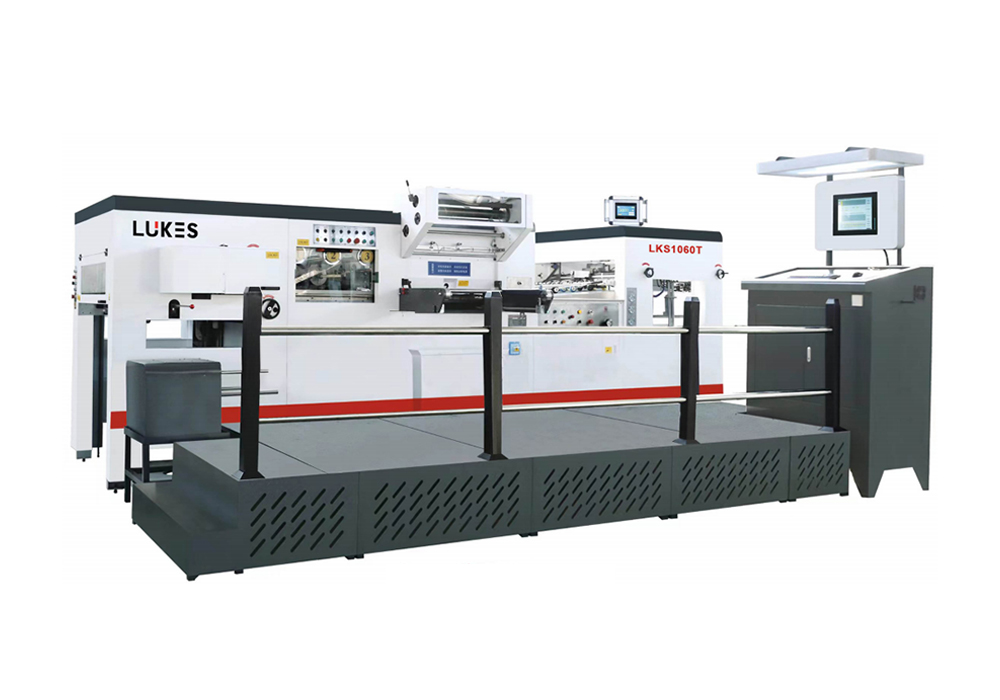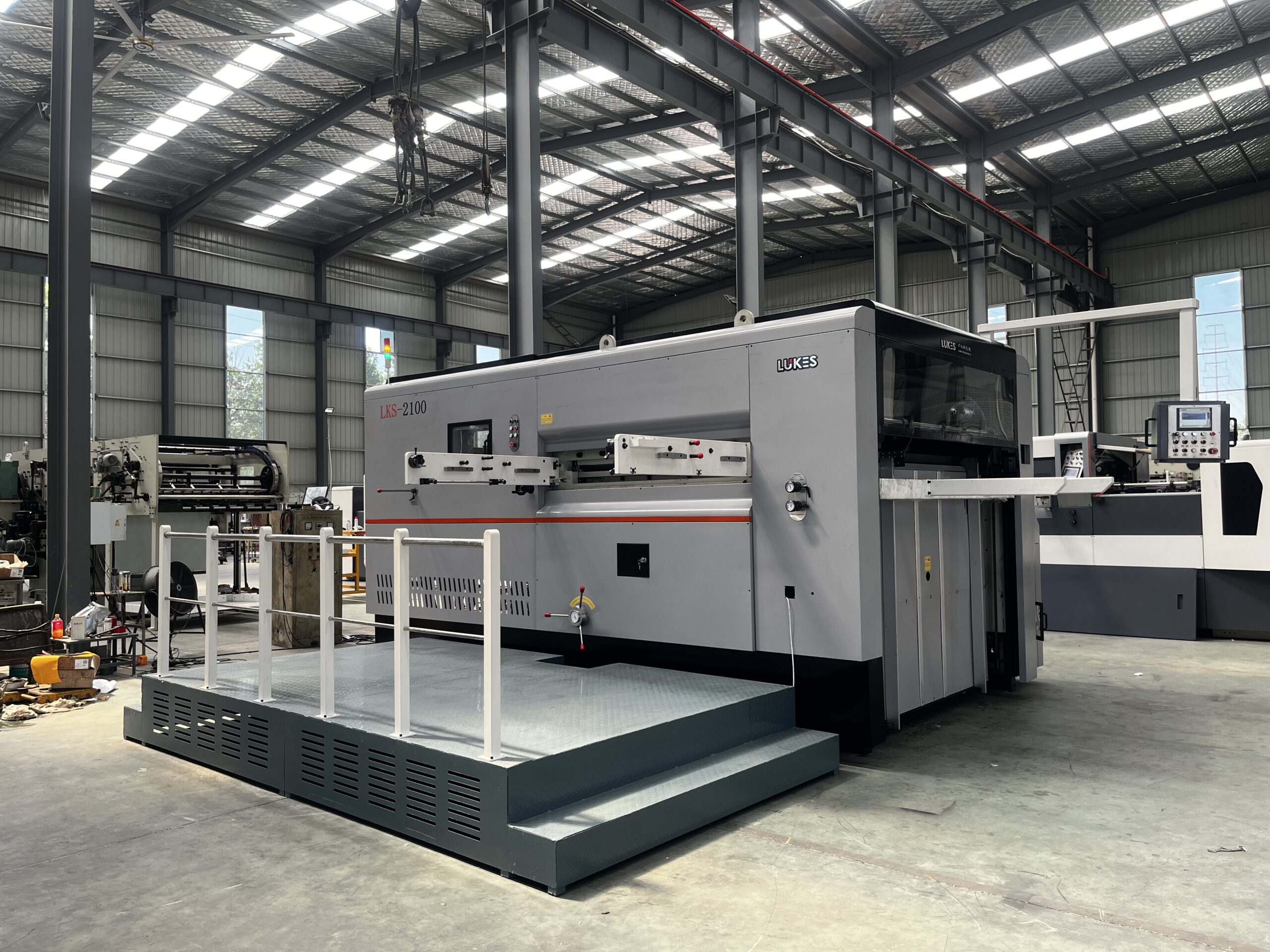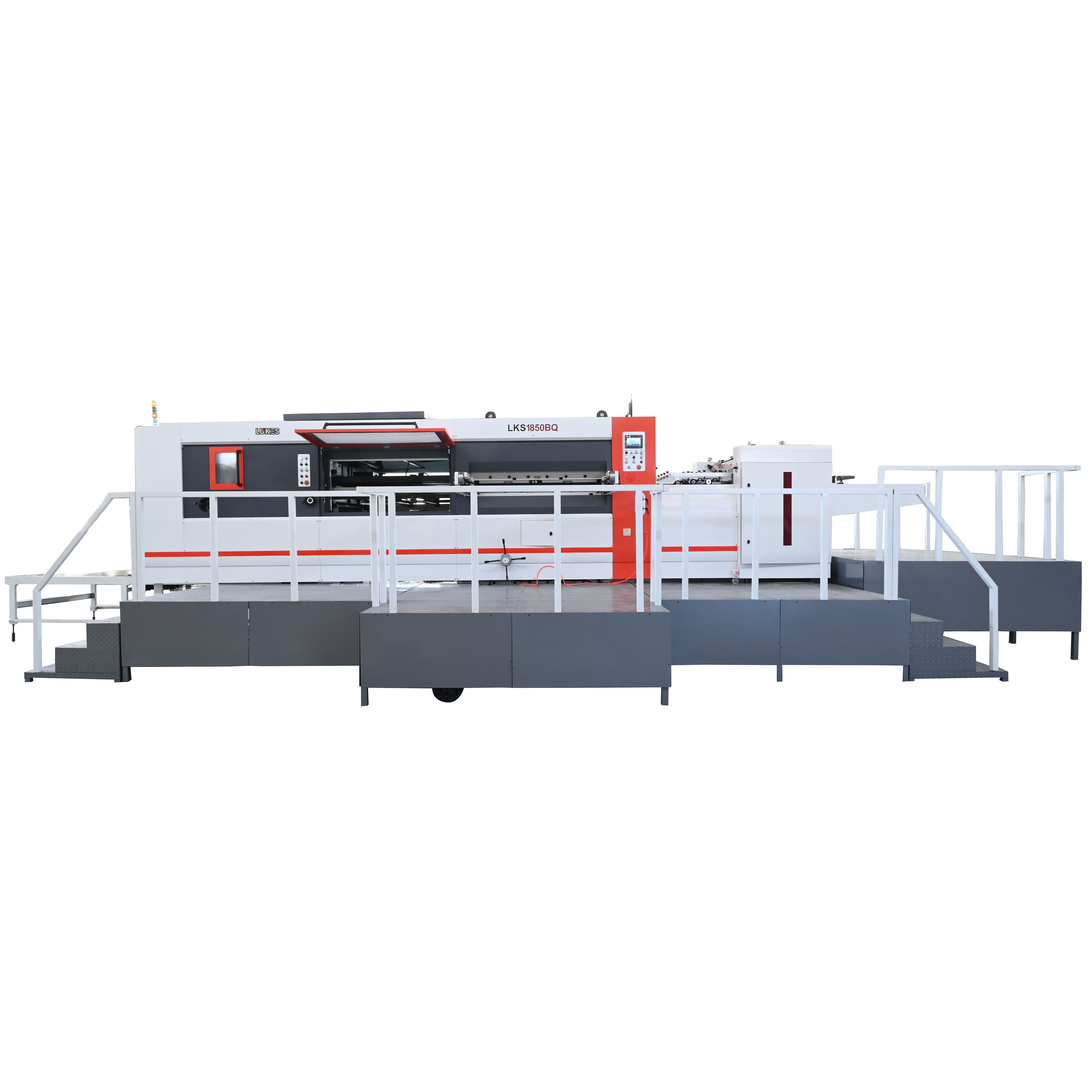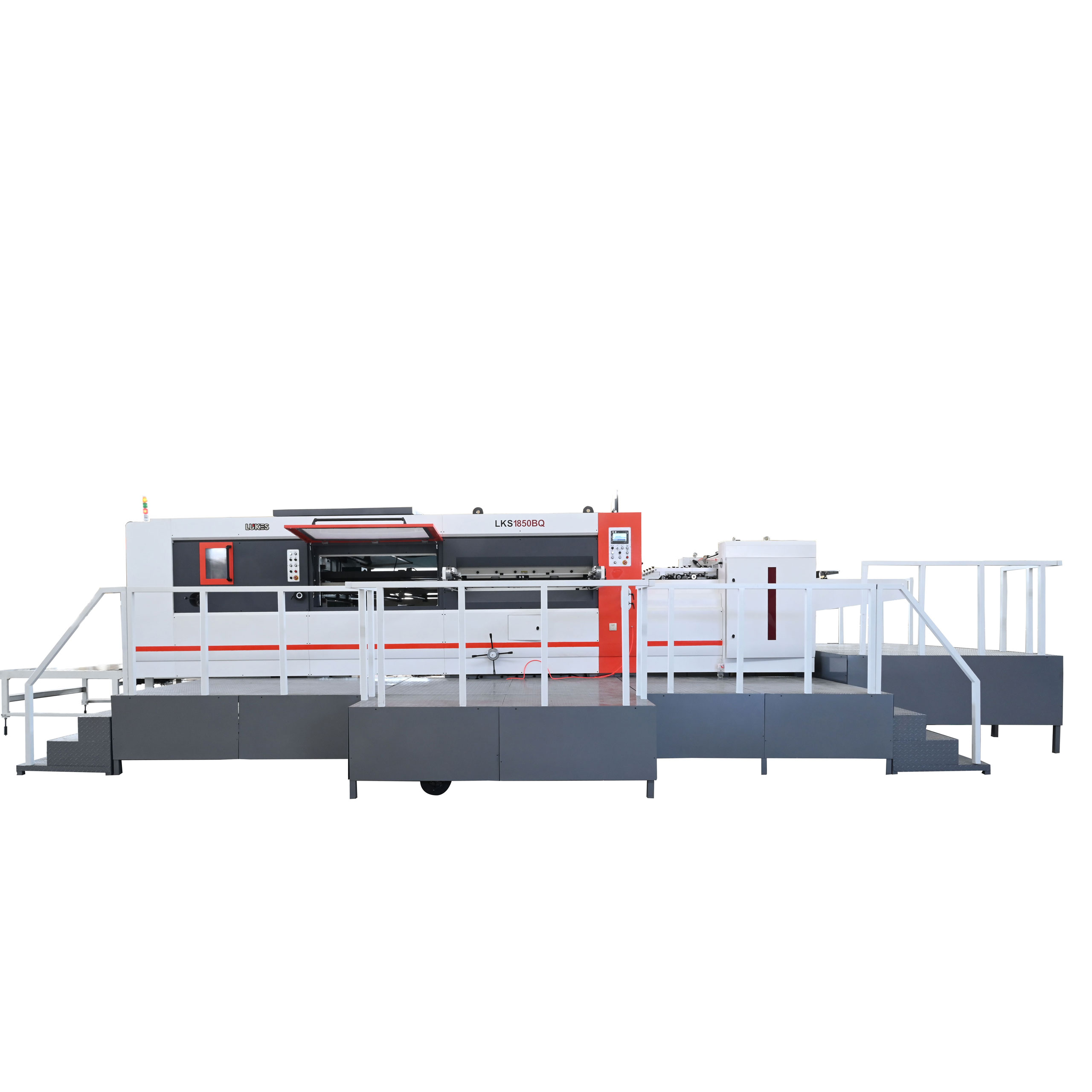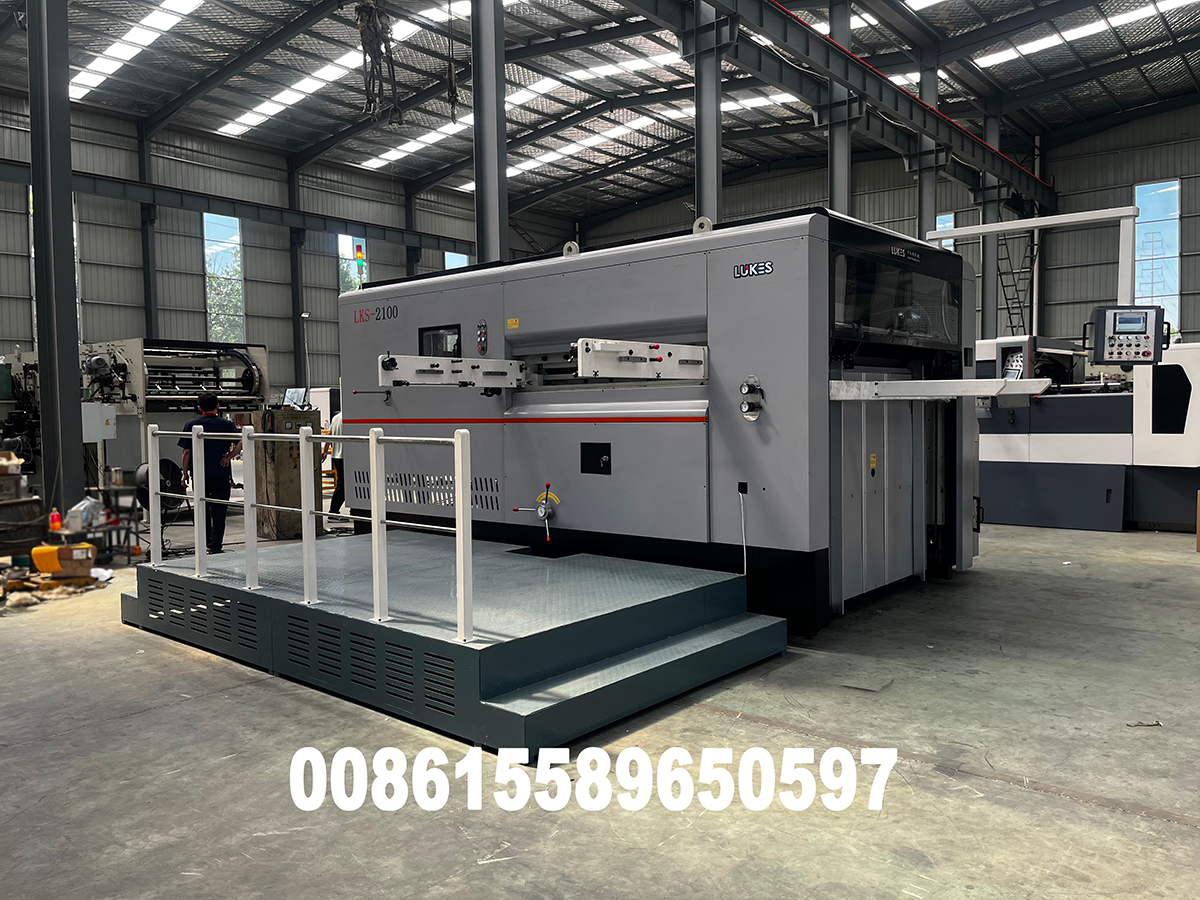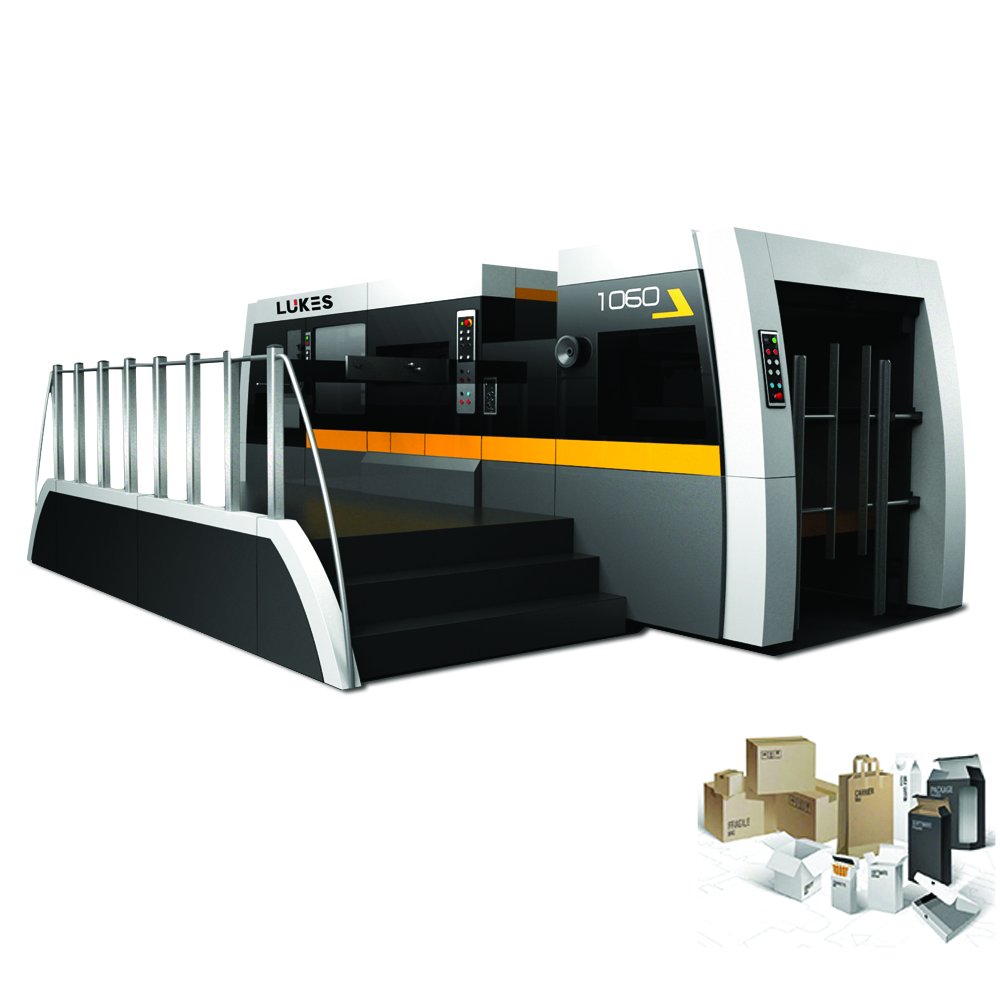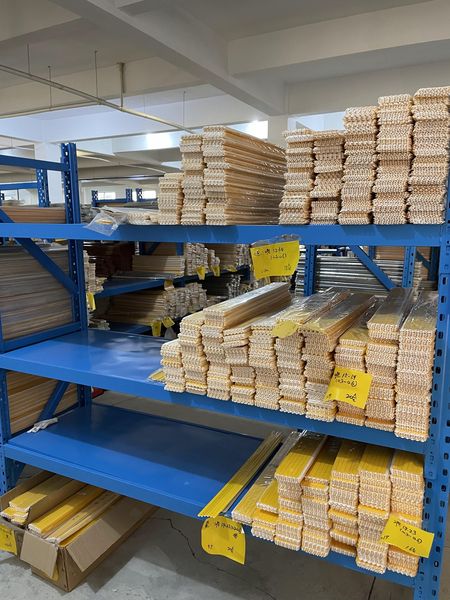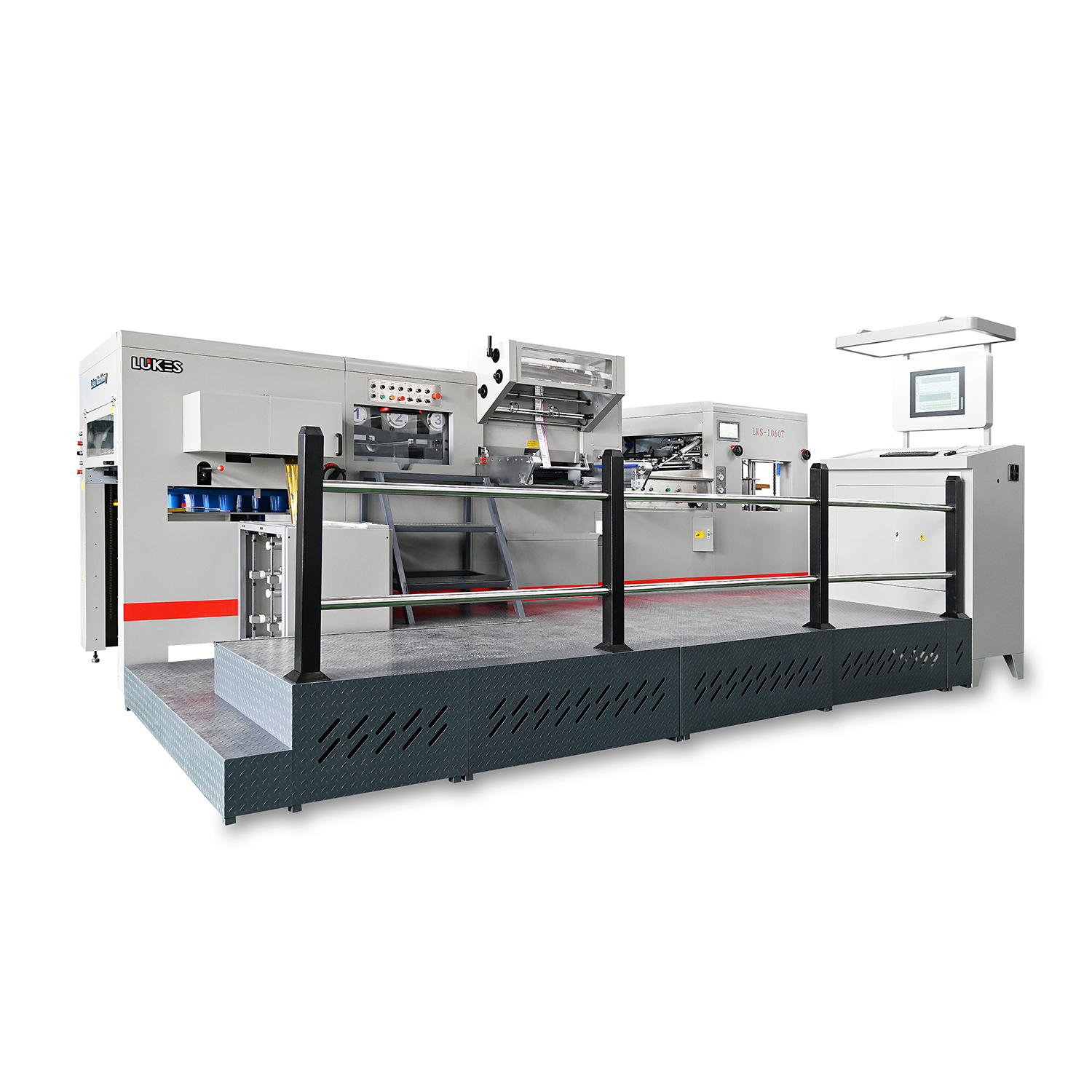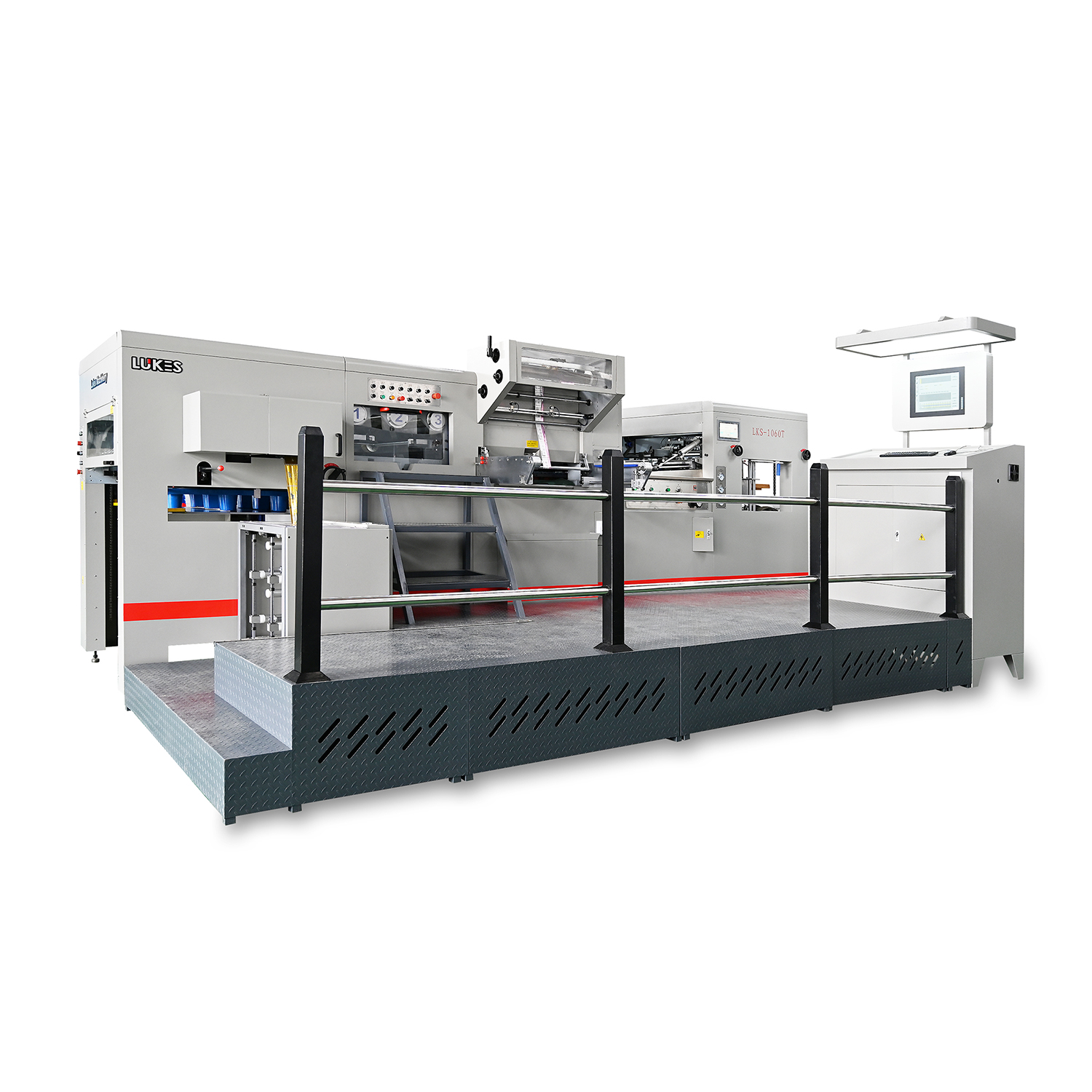Panoramic Analysis of the Die-Cutting Machine Industry in 2025: Market Growth, Technological Revolution, and the Competitive Landscape
Panoramic Analysis of the Die-Cutting Machine Industry in 2025: Market Growth, Technological Revolution, and the Competitive Landscape
1. Market Size and Growth Drivers: Driven by the Dual Engines of Global Expansion and Technological Upgrades
As a key support sector for modern manufacturing, the die-cutting machine industry is experiencing unprecedented growth opportunities. According to the latest industry data, the global die-cutting equipment market is poised for steady expansion in 2024, with the Chinese market performing particularly well. In 2023, demand for die-cutting equipment in China is expected to reach approximately 160,000 units, with a market size of 23.7 billion yuan. In 2024, demand will further climb to 180,000 units, exceeding 26 billion yuan, a year-on-year increase of approximately 9.7%. This growth trend is expected to continue over the next five years. By 2025, the market size of China’s small die-cutting machine segment is expected to reach approximately 4.5 billion yuan, nearly doubling from 2020.
From a global perspective, die-cutting equipment with different technology paths exhibits differentiated growth trajectories:
Flatbed digital die-cutters: Global sales reached US$449 million in 2024 and are projected to grow to US$580 million in 2031, with a compound annual growth rate (CAGR) of 3.7%.
Automatic laser die-cutting equipment: Growth momentum is even stronger, with global sales reaching US$638 million in 2024 and projected to reach US$1.006 billion in 2031, a CAGR of 6.7%.
Precision rotary die-cutting equipment: With the accelerated upgrading of China’s manufacturing industry, this segment is gradually replacing traditional flat-blade die-cutters and becoming the primary focus of industry upgrades.
The core drivers of industry growth come from three main areas:
Surging demand for packaging and printing: China’s packaging and printing industry has reached 1.47 trillion yuan, with over 10,441 enterprises above a designated size. Amid the rapid development of e-commerce and express delivery, demand for high-efficiency die-cutting equipment continues to rise. The booming new energy industry: Large-scale production of power batteries places extreme demands on electrode cutting. Laser die-cutting speeds have surpassed 150-200 m/min, with burr control below 15μm, becoming a core technical guarantee for high-quality battery production.
Driven by smart manufacturing policies: The “14th Five-Year Plan for Smart Manufacturing Development” explicitly mandates that by 2025, over 70% of large-scale manufacturing enterprises achieve digitalization and networking, driving the rapid evolution of die-cutting equipment towards automation and intelligentization
2 Technological Evolution: Intelligence, High Precision, and Sustainability Go Hand in Hand
Die-cutting equipment technology is undergoing a revolutionary upgrade, primarily reflected in three key areas:
2.1 Integration of Intelligence and Automation
Modern die-cutting machines have achieved comprehensive human-machine interaction optimization. Flexible control programs via programmable logic controllers (PLCs) significantly enhance process adaptability. Leading companies such as BOBST have introduced the SPHERE HMI, a human-machine interface integrated with the BOBST Connect cloud platform, enabling seamless data interconnection between die-cutting tools, machines, and production processes. In terms of specific functions:
Automatic registration systems: Such as the POWER REGISTER Plus precision registration system, which can identify tiny reference marks on the side of each sheet, reduce paper waste and save up to one ton of material per million sheets.
Intelligent monitoring and early warning: Through real-time fault monitoring of the machine’s electrical components and early warning of die pressure, abnormal equipment downtime is reduced by over 50%, significantly extending the life of key components.
Digital twin applications: Some high-end machine models are beginning to incorporate virtual commissioning technology, enabling parameter optimization before actual production, reducing trial run losses.
2.2 Breakthroughs in High Precision and High Efficiency
Precision rotary die-cutting equipment is gradually replacing traditional flat-blade machines. Its core advantage lies in reducing floor space by 30%, increasing production efficiency by over 40%, and significantly improving product qualification rates. In the power battery sector, laser die-cutting technology has achieved significant breakthroughs:
Cutting speeds have reached 200 m/min, a 150% increase over traditional mechanical die-cutting.
Burrs are kept to within 15 μm, and the heat-affected zone is less than 80 μm.
Changeover time has been reduced by 50%, significantly enhancing equipment compatibility.
Bobst’s EXPERTCUT 106 PER die-cutter, equipped with a carbon fiber gripper bar, increases production speed from 9,000 to 9,500 sheets/hour by reducing inertia and improving acceleration, setting a new industry benchmark.
2.3 Energy Saving, Environmental Protection, and Customized Upgrades
Energy-saving technologies have become a key area of equipment innovation:
Energy Consumption Optimization: The BOBST Energy Saving Kit reduces energy consumption from 5 kWh/1,000 sheets to 4 kWh/1,000 sheets, saving 1 MWh/million sheets.
Material Innovation: The use of recyclable plastics and water-based paints in equipment manufacturing has increased by 25%, and the use of environmentally friendly packaging materials has increased by 6%.
Powertrain Upgrade: The use of permanent magnet synchronous motors and intelligent load regulation technology reduces energy consumption by 30% when the equipment is not loaded.
Customized production is becoming a new growth point in the industry. Equipment manufacturers provide customized solutions tailored to the needs of different industries:
Electronics: Ultra-precision rotary die-cutting equipment meets the micron-level cutting requirements of adhesive products for smartphones and tablets.
Medical: Dedicated die-cutting solutions for multi-layer medical composite materials (plasters, medicated patches, and Band-Aids).
Functional Integration: Integrating heat pressing, printing, folding, and embossing functions into die-cutting, achieving multi-functionality within a single machine.
3. Industrial Chain Structure: Upstream and Downstream Synergy and Regional Agglomeration Effects
The die-cutting equipment industry chain exhibits a highly specialized division of labor, significantly enhancing upstream and downstream synergy.
3.1 Upstream Supply Chain
The supply structure of core components and materials is relatively concentrated.
Metal materials: High-quality aluminum alloys and specialty steels (used in equipment frames and key structural components) are significantly affected by fluctuations in international raw material prices.
Core components: High-precision motors (dominated by Japanese and German brands), cutting tools (carbide and tungsten carbide), and sensors (European and American brands are technologically advanced) still rely on imports for over 40%.
Domestic Substitution: Chinese manufacturers are accelerating independent R&D in transmission systems, control systems, and other areas, with the localization rate increasing by approximately 5% annually.
3.2 Midstream Manufacturing Landscape
China’s die-cutting equipment manufacturing industry exhibits a multi-tiered competitive landscape:
International giants: BOBST of Switzerland and Masterwork of Germany dominate the high-end market, holding over 60% of the automatic die-cutting machine market share.
Domestic leading companies: Tianjin Changrong Technology, Han’s Laser, and Hymxing Laser are accelerating technological breakthroughs and overtaking in the new energy sector.
Small and medium-sized enterprise clusters: Concentrated in the Pearl River Delta and Yangtze River Delta regions, they dominate the semi-automatic equipment market with their cost-effectiveness, but face pressure to transform and upgrade.
Regional distribution demonstrates a significant agglomeration effect:
Pearl River Delta: Primarily focused on electronic precision die-cutting, supporting the 3C industry chain.
Yangtze River Delta: A high-end packaging equipment manufacturing center with a strong foreign trade orientation.
Bohai Rim: Large-scale die-cutting equipment production supported by a heavy industrial base.
3.3 Downstream Application Changes
The demand structure for die-cutting equipment is undergoing profound changes:
Traditional Mainstream: Packaging and printing still account for the largest application share (approximately 45%), driven by e-commerce, maintaining an 8% share. Annual growth1
Emerging driving forces: Demand for new energy (power batteries) is growing at an annual rate exceeding 30%, and medical electronics applications are growing by approximately 25%.
Potential growth: Demand for precision die-cutting in areas such as automotive interiors, flexible displays, and wearable devices is entering a period of rapid growth.
4. Competitive Landscape: The competition between international giants and Chinese companies is intensifying.
The global die-cutting equipment market is characterized by differentiated competition and a distinct Chinese-foreign rivalry.
4.1 Technological Barriers of International Companies
European and American companies, leveraging centuries of technological expertise, have built a solid moat in the high-end market.
BOBST: The newly launched EXPERTCUT 106 PER, featuring ACCUPLATEN precision die tables and ZERO PATCHING pressure compensation plate technology, reduces re-pressing time by 80%, redefining production efficiency.
Professional leader: Intec Printing Solutions maintains a global market share exceeding 25% in flatbed digital die-cutting.
Hidden champions: Germany’s Sanwa and Italy’s De Rossi Vittoriano possess irreplaceable advantages in specialty material die-cutting.
4.2 Breakthrough Paths for Chinese Companies
The rise of Chinese die-cutting equipment manufacturers demonstrates multi-dimensional breakthroughs:
Technological Substitution: Hymxing Laser has achieved technological advancement in lithium electrode sheet cutting, achieving die-cutting speeds of 200 m/min and burr control of <15 μm, surpassing international competitors in all parameters.
Industry Chain Integration: Through vertical integration, companies such as Han’s Laser and Changrong Shares are reducing their reliance on imported core components and improving supply chain resilience.
Intelligent Empowerment: Tianjin Changrong Technology has launched a die-cutting production line equipped with AI visual inspection, achieving a 99.8% defective product detection rate and significantly reducing manual re-inspection costs.
Emerging Market Focus: In Southeast Asia, the Middle East, and other regions, Chinese equipment offers a significant price-performance advantage, with market share exceeding 50%.
4.3 Evolving Competitive Landscape
Industry concentration is accelerating, creating a landscape where “large players prevail, while specialized, specialized, and innovative players coexist”:
First Tier: The market share of the top five global companies has increased from 38% in 2020 to 40% in 2021. Increase to 45% by 2024
Segment Champions: In emerging sectors such as healthcare and new energy, a number of “specialized, sophisticated, and innovative” companies, such as Lianying Laser and Liguan Machinery, have emerged.
Shifting Focus of Competition: From pure equipment sales to integrated “equipment + service + data” solutions.
5. Industry Challenges and Risks: Triple Pressures of Cost, Technology, and Policy
The die-cutting equipment industry faces multiple challenges amidst rapid growth, requiring coordinated responses from the industry chain:
Cost Pressure: Production costs in the Yangtze River Delta and Pearl River Delta regions are increasing by an average of 8-10% annually, and fluctuations in raw material prices have led to a 3-5 percentage point decline in equipment gross profit margins. Rising labor costs have weakened the price advantage of traditional semi-automatic equipment, accelerating industry restructuring. Taking precision rotary die-cutting equipment as an example, while achieving significant long-term benefits, the initial investment is two to three times that of traditional flat-blade equipment, making it prohibitive for small and medium-sized enterprises.
Technology Iteration Risk: Disruptive technologies such as laser die-cutting require significant R&D investment, with annual R&D expenses typically exceeding 5% of sales for a single company. Misselected technology paths can lead to huge investments going to waste. For example, attempts to apply water jet cutting technology in the consumer electronics sector have not met expectations. Furthermore, core components such as high-end CNC systems and precision sensors remain dependent on imports, posing a bottleneck risk.
Homogeneous competition: China has a large number of die-cutting equipment manufacturers, but fewer than 20% are large-scale enterprises, leading to price wars in the low-end market. Some companies invest less than 2% in R&D and lack core technologies, relying solely on lower-quality materials to maintain price advantages. This leads to concerns about “bad money driving out good money” in the industry.
Risk of policy dependence: While policies such as the “14th Five-Year Plan for Intelligent Manufacturing Development” are beneficial to industry development, subsidy reductions or industrial policy adjustments could trigger market volatility. Furthermore, the EU’s newly implemented Carbon Border Adjustment Mechanism (CBAM) imposes higher requirements on equipment energy efficiency, putting pressure on exporting companies to upgrade their technology.
Talent gap: There is a severe shortage of interdisciplinary talent with combined skills in mechanical engineering, materials science, and AI algorithms. According to industry research, the vacancy rate for high-end technical positions has reached 30%, hindering the improvement of companies’ innovation capabilities.
6 Future Development Prospects: A Golden Decade Driven by New Energy and Globalization
Driven by both technological breakthroughs and market demand, the die-cutting machine industry is entering a period of strategic opportunity for rapid development:
6.1 Explosion of Emerging Application Scenarios
In the new energy sector: Expansion in power battery production capacity is driving a surge in demand for laser die-cutting equipment. Assuming 3-4 laser die-cutting machines are required for every 1GWh of production capacity, the planned 2,000GWh of new battery production capacity globally will create demand for 6,000-8,000 high-end devices, representing a market size exceeding 20 billion yuan.
Healthcare Industry: Precision components for medical patches and smart wearable medical devices are driving new demand. Multifunctional die-cutting equipment can simultaneously perform die-cutting, hot pressing, and sterilization packaging for multi-layer composite materials, becoming a new growth point in the industry.
Breakthroughs in flexible electronics: The mass production of foldable displays and flexible sensors will drive upgrades in roll-to-roll (R2R) precision die-cutting equipment, raising accuracy requirements to ±5μm.
6.2 Accelerating Globalization
Chinese die-cutting equipment companies are entering a new phase of internationalization:
Technical Standard Export: Haimxing’s laser die-cutting technology has obtained EU CE and North American UL certifications, enabling complete equipment exports to Europe and the United States.
Localized Production: Leading companies are establishing assembly bases in Southeast Asia and Mexico to circumvent trade barriers and increase global market share.
Service Network Development: A 24-hour global response mechanism has become standard for leading companies, and remote diagnostic technology will reduce equipment troubleshooting time by 70%.
6.3 Future Prospects for Technological Integration
Digital Twin Applications: The penetration rate of equipment lifecycle management systems will increase from the current 15%. Increase to 60% by 2028, enabling preventive maintenance.
AI process optimization: Deep learning algorithms optimize cutting parameters in real time, increasing material utilization by 3-5% and reducing energy consumption by 10-15%.
Modular design: Standardized equipment functional components allow customers to customize their designs, shortening delivery cycles by 50%.
7 Conclusion: Towards a New Industrial Ecosystem of Intelligentization and Sustainable Development
The die-cutting machine industry is undergoing profound transformation, with technological iteration, application expansion, and a reshaping of the competitive landscape jointly driving industry upgrades:
Short-term Trend: Laser die-cutting will further consolidate its dominant position in the new energy sector, while traditional mechanical die-cutting will transition to multifunctional composite machines.
Medium-term Outlook: Industry reshuffles will accelerate, small and medium-sized enterprises lacking core technologies will face consolidation, and market share will concentrate in leading companies.
Long-term Vision: Intelligent die-cutting factories aiming for “zero-defect manufacturing, zero human intervention, and zero-waste production” will become a reality.
For Chinese companies, the path to breakthrough lies in a three-dimensional strategic layout:
Technical Depth: Intensify R&D in core areas such as laser control algorithms and precision transmission to overcome bottlenecks.
Application Innovation: Deepen China’s competitive strengths in industries such as power batteries and medical electronics, developing scenario-specific solutions.
Ecosystem Building: Lead the formation of industrial innovation consortiums to promote the coordinated development of materials, equipment, and processes.
As a key component of industrial machine tools, die-cutting equipment’s technological level and industrial scale directly reflect a country’s overall manufacturing strength. Driven by policy support, market demand and technological innovation, China’s die-cutting machine industry is expected to achieve a historic leap from “following” to “running side by side” and then to “leading” in some areas by 2030, providing a Chinese solution for the high-quality development of the global manufacturing industry.
